Way back in April, Lane’s Landscaping Supplies published a blog with tips on opening your backyard pond.
Now that fall is here, it’ll soon be time to shut down your pond and protect it for winter.
And here’s how to do it.
 In fall…
In fall…
Pay close attention to the outdoor temperature. As soon as it gets down to 10°C (that’s 50°F), you need to clean out your pond.
Actually, you should tidy it up before it gets that cold because:
- IT’S MUCH EASIER TO CLEAN AND DRAIN pond water that’s not frozen (even a little) or covered in fallen leaves, wayward mulch or other debris.
- POND FISH (IF YOU HAVE THEM) ARE QUITE ACTIVE and there’s less chance of injuring or impacting them if you clean your pond while it’s still somewhat warm outside.
To start, scoop up any leaves or branches that are floating on the surface of the water. Just be careful to not grab any fish by accident.
Fall tip 1: Pump out some water
After the surface is clean, it’s time to pump out some (not all) of the water.
Doing this will make it easier to remove by hand (so make sure you’ve got good gloves) any topsoil or other muck that’s stuck against things like:
- Pond wall liner
- Edging
- Shelves
- Oddly-shaped spaces
Whatever you can’t reach, you can remove with a garden hose. That debris will settle on the surface, where you can easily access and remove it with your net.
Also, you just topped up the water you just pumped out.
 Fall tip 2: Taking care of your pond plants
Fall tip 2: Taking care of your pond plants
Plants add a touch of colour and personality to your pond.
They’re also good for any fish you have inside, too.
Come fall, though, those plant products are starting to wither and die. It’s best to get rid of them before they become diseased and pollute the water (which, in turn, will harm your fish).
As soon as you notice your pond plants starting to fade, you should:
- PRUNE AWAY dead or damaged stems.
- BRING DELICATE PLANTS inside for the fall and winter. You can take care of them indoors and bring them back into the pond once spring landscaping season arrives.
- HARDY PLANTS won’t mind the cold weather. You can move them to the deepest end of your backyard pond.
- COVER BOG-TYPE PLANTS with straw or another type if organic insulating aggregate.
 Fall tip 3: Cover up your pond
Fall tip 3: Cover up your pond
After you’ve cleaned the pond, you should place a pond net (think of a hammock that’s tied between two trees) on top of it.
Pond nets catch leaves, branches, twigs and other stuff; thus preventing them from falling inside.
A few things to keep in mind:
- HANG THE POND NET a minimum of 18” above the water’s surface.
- TIE THE EDGES TIGHT to ensure nothing slips through and to keep the pond net from sagging down during the course of winter.
For winter…
There are three elements which need to be turned off before winter really hits:
- Pump
- Filter
- UV clarifier
And the sooner you properly shut down these components, the better.
 Winter tip 1: Closing the pump
Winter tip 1: Closing the pump
Some homeowners – if they have fish – prefer to keep the pump running all winter long.
This is because it creates comfortable warm water at the bottom and that’s where fish tend to stay during the winter.
Now, you can close your pump and keep fish in your pond too because:
- COLD WATER HAS MORE OXYGEN than warm water.
- FISH SLOW DOWN THEIR BREATHING in winter. This means they use less oxygen than normal.
- IT’S TOO COLD FOR BACTERIA TO GROW, which means you won’t need to use a filter to keep the water clear and clean.
Winter tip 2: No fish? Then drain everything
If you don’t have fish and want to close your pond filter too, then everything in your pond needs to be drained fully:
- Piping
- Extra pumps
- UV items
In winter, you can store your pond accessories in a cold, unheated place (like your garage or backyard shed). But you’ll need to be certain every last drop of water is gone.
Any residual water leftover in pipes or tubes will freeze/thaw, expand and crack. And you won’t even realize it until you reopen your pond in spring.
Instead, store your pond supplies inside in a warm, dry spot.
 Winter tip 3: Leaving your fish for the winter
Winter tip 3: Leaving your fish for the winter
Have koi?
You can actually leave them in your pond during the winter months if (and only if):
- THE DEPTH OF YOUR POND is at least 18”.
- THERE IS VERY LITTLE (OR NO) water circulation.
Don’t forget: warm water will settle at the bottom of your pond. In winter, that’s where your fish will hang out anyway.
Look at it this way. Have you ever gone ice fishing?
Yes? Then you know the fish aren’t just below the frozen surface. They’re at the bottom, where it’s warmer and where they can swim freely.
If you’ve stocked your pond with things like goldfish, lionheads or bubble-eyes, they’ll need to come inside. They just aren’t built to handle winter water.
Come to Lane’s for all your fall landscaping needs
Whatever you need to safely close your pond for autumn and winter, we can help.
Questions? Advice? Products or supplies?
All you have to do is contact us with your comments or request a FREE quote on any products we have in stock.


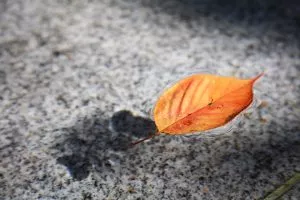 In fall…
In fall…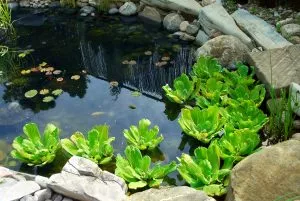 Fall tip 2: Taking care of your pond plants
Fall tip 2: Taking care of your pond plants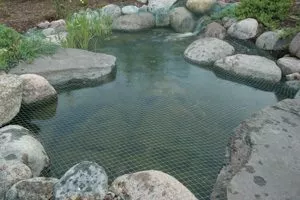 Fall tip 3: Cover up your pond
Fall tip 3: Cover up your pond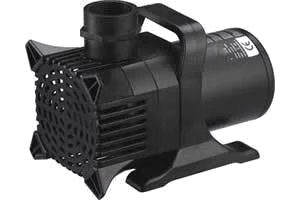 Winter tip 1: Closing the pump
Winter tip 1: Closing the pump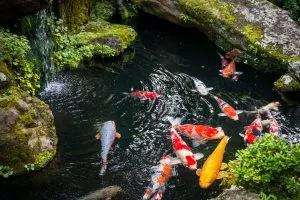 Winter tip 3: Leaving your fish for the winter
Winter tip 3: Leaving your fish for the winter